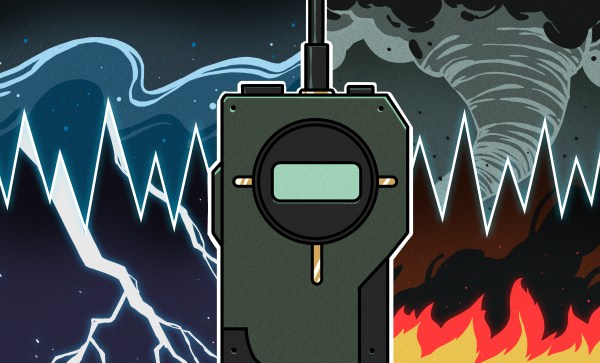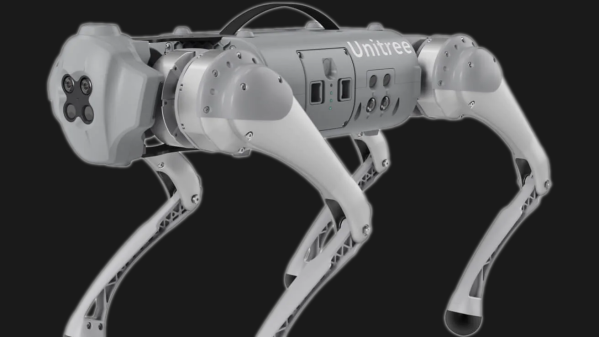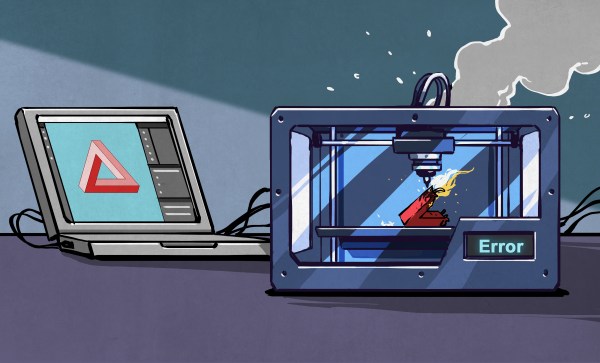Members of Pixelbar woke up to shocking news on Wednesday morning this week as they learned that a fire had destroyed the building housing their Rotterdam hackerspace. Pictures of the fire are pretty dramatic and show the entire building ablaze. We’re not familiar with Pixelbar specifically, but most hackerspaces seem to share space with other businesses in repurposed warehouses and other industrial buildings, and it looks like that was the case here. Local coverage doesn’t indicate that a cause has been determined, but they do say that “large batches of wood” were stored in or near the structure, which likely contributed to the dramatic display. There don’t seem to be reports of injuries to civilians or first responders, so that’s a blessing, but Pixelbar seems to have been completely destroyed. If you’re in a position to help, check out their GoFundMe page. As our own Jenny List, who currently lives in The Netherlands, points out, spaces suitable for housing a hackerspace are hard to come by in a city like Rotterdam, which is the busiest port in Europe. That means Pixelbar members will be competing for space with businesses that have far deeper pockets, so anything you can donate will likely go a long way toward rebuilding.
A CVT For Every Application
When the subject of CVTs or continuously variable transmissions comes up, the chances are that most readers will think of the various motor vehicles they’ve appeared in. Whether it’s a DAF, a Ford, a FIAT, or a Chevrolet, most major manufacturers have tried one at some point or another with greater or lesser success. The automotive ones inevitably use a variation on a V-belt or metal band between variable separation conical pulleys, but this is by no means the only CVT configuration. Serial tinkerer [Robert Murray-Smith] takes an in-depth look at the subject as part of his ongoing fascination with wind turbines.
What caught our eye about this video isn’t so much the final 3D-printed design he selects for his experiments, but the history and his look at the different CVT designs which have appeared over the years. We see the V-belts, as well as the various cone configurations, the disk transmissions, the hydrostatic ones, and even magnetic versions. His transmission uses two cones with a rubber coating, with of all things a movable golf ball between them. We’re guessing it will appear somewhere in his future videos, so watch out for it.
Meanwhile, this isn’t the first time we’ve seen a CVT, [James Bruton] used a hemisphere to make one on a robot.
Meshtastic For The Greater Good
Last week, my city was hit by a tornado. That’s not surprising here in Oklahoma, and thankfully this event was an F0 or possibly even an EF0 — a really weak tornado. Only a couple roofs collapsed, though probably half the houses in town are going to need roof repairs, thanks to the combination of huge hail and high winds. While it wasn’t too bad, power did go down in a few places around town, and this led to an interesting series of events.
Chat messages were coming in like this: “That was a [power] flicker, yeah. Even took down my Internet.” Followed by “Whee, [fiber Internet] got knocked out and now Starlink has too many clouds in the way.” And after ten minutes of silence, we got a bit worried to see “Time to hide under a bed. … Is cell service back?” It is a bit spooky to think about trying to help neighbors and friends after a disaster, in the midst of the communication breakdown that often follows. If he had needed help, and had no working communications, how long would it have taken for us to go check on him?
Continue reading “Meshtastic For The Greater Good”
Robodog Goes Free Thanks To Unofficial SDK
What’s better than a pretty nice legged robot? One with an alternate SDK version that opens up expensive features, of course. The author didn’t like that the original SDK only came as pre-compiled binaries restricted to the most expensive models, so rolled up their sleeves and started writing a new one.

There are a number of commercially-available robotic quadrupeds that can trace their heritage back to the MIT Mini Cheetah design, and one of them is the Unitree Go1 series which sports a distinctive X-shaped sensor cluster on its “face”. The basic models are affordable (as far as robots go, anyway) but Unitree claims only the high-priced EDU model can be controlled via the SDK. Happily, the Free Dog SDK provides a way to do exactly that.
The SDK is a work in progress, but fully usable and allows the user to send various high level and low level commands to the Go1 robots. High level examples include things like telling the robot to perform pushups, turn 90 degrees, or walk. Low level commands are things like specifying exact positions or torque levels for individual limbs. With the new SDK, doing those things programmatically is only a Python script away.
Know any other robots that might be based on the same system? This SDK might work on them, too.
Open Source And Giving Back
3D printing YouTuber [Thomas Sanladerer] made a fairly contentious claim in a video about the state of open source hardware and software: namely that it’s not viable “anymore”. You can watch his video for more nuance, but the basic claim is that there are so many firms who are reaping the benefits of open designs and code that the people who are actually doing the work can’t afford to make a living anymore.
[Thomas] then goes on to mention a few companies that are patenting their 3DP innovations, and presumably doing well by it, and he then claims that patenting is probably the right way forward from a business standpoint.
The irony that he says this with a Voron 3D printer sitting behind him was not lost on us. The Voron is, after all, a very successful open-source 3D printer design. It’s just rock solid, has lots of innovative touches, and an extensive bill of materials. They don’t sell anything, but instead rely on donations from their large community to keep afloat and keep designing.
At the same time, a whole bunch of companies are offering Voron kits – all of the parts that you’d have to source yourself otherwise. While not mass-market, these kit sales presumably also help keep some of the 3D printer enthusiast stores that sell them afloat. Which is all to say: the Voron community is thriving, and a number of folks are earning their livings off of it. And it’s completely open.
When [Thomas] complains that some players in the 3DP business landscape aren’t giving back to the open-source community effort, he’s actually calling out a few large-scale Chinese manufacturers making mass-market machines. These companies aren’t interested in pushing the state of the art forward anyway, rather just selling what they’ve got. And sure, there are a million Creality Enders for every Voron 2 out there. And yes, they reap the benefits of open designs and code. But they’re competing in an entirely different market from the real innovators, and I’m not sure that’s a bad thing.
Let us know what you think. (And if you’re reading this in the newsletter format, head on over to Hackaday on Saturday morning to leave us your comments.)
China Plans Its Own Megaconstellation To Challenge Starlink
Satellite internet used to be a woeful thing. Early networks relied on satellites in geostationary orbits, with high latency and minimal bandwidth keeping user demand low. That was until Starlink came along, and provided high-speed, low-latency internet access using a fleet of thousands of satellites in Low Earth orbit.
Starlink has already ruffled feathers due to concerns around light pollution and space junk in particular. Now, it appears that China may be readying its own competing constellation to avoid being crowded out of low orbits by the increasingly-popular service.
Continue reading “China Plans Its Own Megaconstellation To Challenge Starlink”
Inside Digital Calipers
If you do any kind of machining, 3D printing, or PCB layout, you probably have at least considered buying a pair of calipers. Old-fashioned ones had a dial and were mechanical devices, but lately, digital ones have become quite affordable. We keep meaning to tear a set of ours apart to see what’s inside, but thanks to [learnelectronics], we don’t have to — the video below provides a fascinating look at what’s inside a cheap pair of Harbor Freight calipers.
Honestly, it doesn’t seem like it would be that hard to figure out how far down a bar you are. The trick is the caliper has to be super accurate. Oddly enough, the cheap calipers examined use capacitors as a sensing element.
There is a long flexible PCB stuck to the sliding part with conductive pads. The display unit is also a printed circuit and manages the battery, the display, and the other half of the capacitive sensor. If you want a more detailed explanation of how the sensor actually works, check out capsense.com. If you note, the pattern on the sliding part has traces that look like a square wave, and half have a different phase than the other half. These are the sine plates and the cosine plates. A 100 kHz signal flows through the capacitor, and it is possible to read the direction of travel and the amount of travel easily.
The calipers are very accurate, but it’s possible to improve them. A more practical project is to make them communicate with the outside world.


















